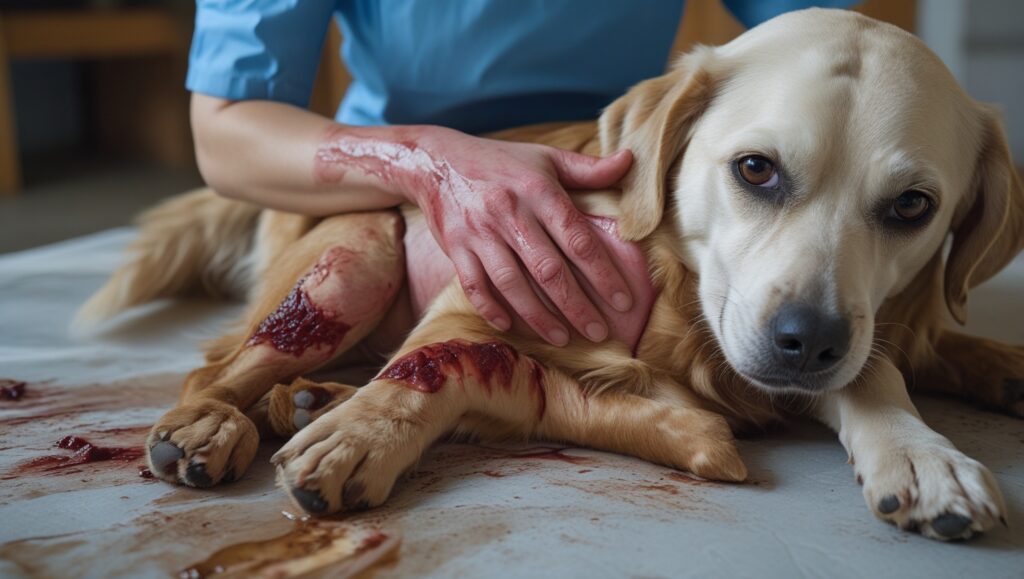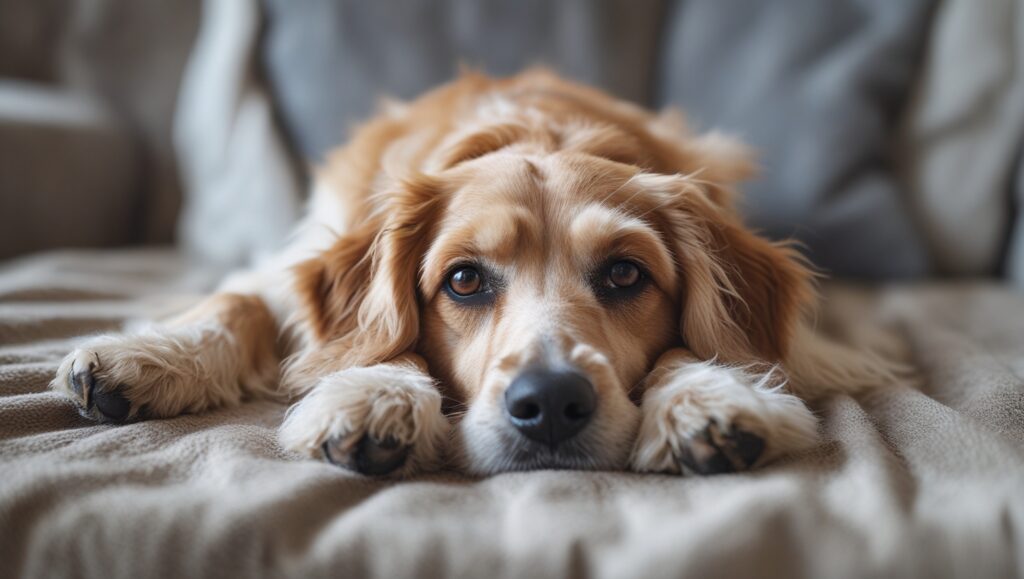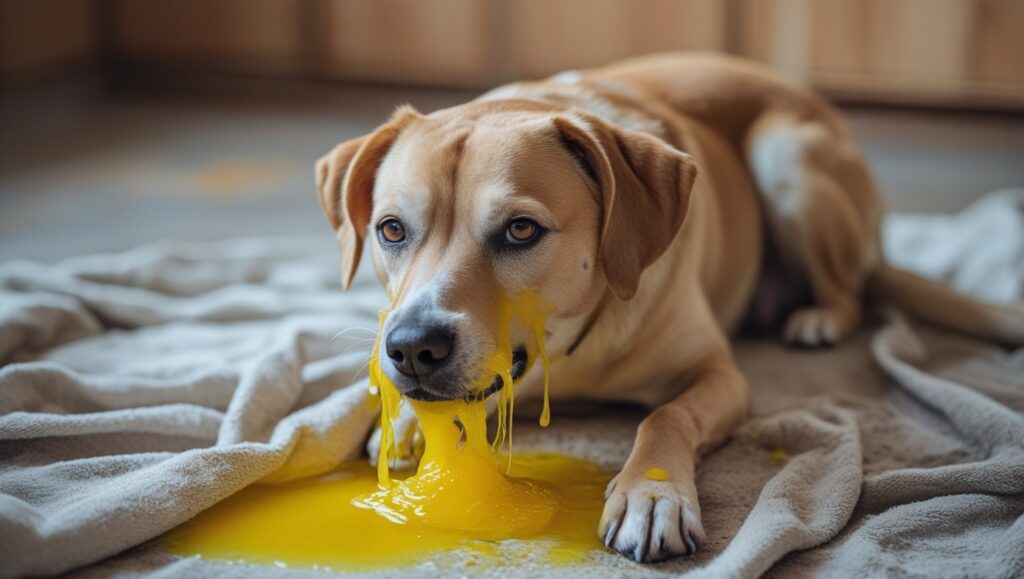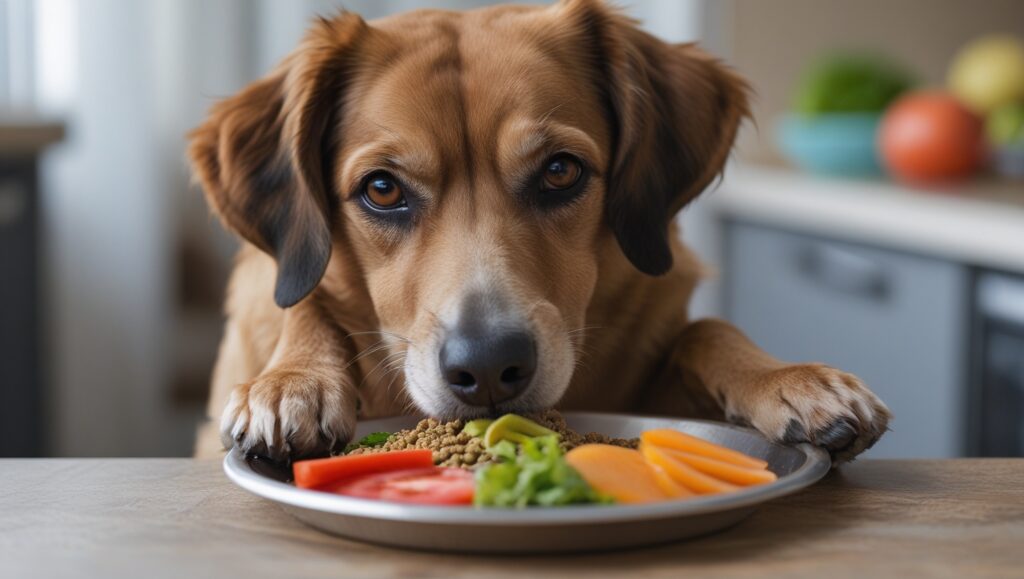Injuries are part and parcel of the life of many dogs, either during their playtime, surgery, or accidental cuts. Being a responsible dog owner means being aware of the Dog wound healing stages pictures and, hopefully, knowing them with the help of pictures or visual identification. It means that by being able to track the progress of healing, you might notice the approaches to complications. In the current post, we shall take you through the entire process of healing, including the events that follow after the initial injury up to total skin regeneration, accompanied by visual images that will guide you on how to know what is normal and abnormal.
Table of Contents

Stage 1: Hemostasis Immediate Response
As soon as your dog has a wound, the body swings into hemostasis, or the role of arresting the flow of blood. During this phase, platelets flood the place and form a clot.
What You May View:
- Fresh bleeding
- Slight swelling
- The redness on the wound edges.
It is not a lengthy stage, but only a couple of hours can be taken up in the process. But it helps in laying the foundation of recovery.
Stage 2: Inflammation—The Body Responds
After bleeding is stopped, the body of your dog begins to fight against infection. This is the inflammatory phase, which can take 2-5 days, where white blood cells arrive at the scene.
Common Signs:
- Heat and redness around the wound.
- Mild swelling
- Watery clear or even slightly yellow liquid (not pus).
Do not worry when the wound takes a bit longer during this period of time. Healing of dog scabs is only beginning. The recovery process is supposed to be through inflammation, though it must begin to ease off after a couple of days.
Stage 3: Proliferation- New Tissue Formation
This is the time the healing magic takes place. At the stage of proliferation, new tissue begins to cover the wound.
Visual Indicators:
- Forming pinkish granulation tissue (this appears to be bumpy or grainy).
- Wound edges are beginning to close together.
- The process of scab formation starts.
A lot of owners become panicked on seeing the granulation tissue, believing that it is some sort of infection. But in this case, this pink and bumpy textile is a good indication of the healing of dog wounds. It demonstrates that there is collagen and blood vessel regeneration.
Stage 4: Maturation—Wound remodeling
The last phase can be a few weeks to months on the scale of wound depth and size. The tissue is reinforced by the body, scars become pale, and the skin barrier is healed.
What to expect:
- The scab will drop off naturally.
- The skin can be lighter or smoother.
- The fur may regenerate (loosely in the case of deep wounds).
It is, however, at this stage that your dog should have fully healed. The course of healing for a wound on a dog may be different, but in the vast majority of cases with a minor, widely open cut, it takes a minimum of 10 days, but more precisely 20 days, to be completely healed.
What Do You Need to Do to Know Whether a Dog Wound is Healing or Not?
It is best to know, or rather understand, the normal phases of wound healing in dogs so that when things don’t go according to plan, the deviation can then be identified. There are some good indications:

- Reduced swelling and less redness with time.
- Development of dry scab formation.
- No putrid or purulent smell.
- Enhanced licking or biting of the wound.
- Step-by-step healing of the wound edges.
Once the wound begins to ooze green/white pus, smells very bad, or enlarges even further after a couple of days, then there is the possibility that it has developed an infection, and you need to make an immediate appointment with your vet.
Pictures of the Stages of Healing Dog Wounds: Reasons to Use Them
Although the description has a lot of information, a picture of a stage of healing would assist you in comparing your dog’s wound in the specific stages with that of a normal one. Images enable the pet owners to evaluate:
- In case the appearance of scabs is healthy.
- The progress of the growth of granulation tissue.
- In case the color is abnormal (such as dark red or green), that could be an indication of infection.
- How the wound edges are acting (psychromphal or cleaved apart, etc.)
When you Google the pictures of dog wound healing stages, the purpose should be to find pet healthcare blogs or even articles supported by veterinarians that can serve as qualified authority pictures.
The Way to Promote Wound Healing in Dogs
A post-surgery or accidental injury may seem quite different, but how you can help your dog to recover in a safe and clean environment is similar.
1. Maintain The Wound Clean
Apply a vet-approved antiseptic solution. Do not use hydrogen peroxide unless told to do so as it will delay healing.
2. Avoid Licking and Scratching
An Elizabethan collar (cone) or some protective clothing may prevent your dog from reopening the wound.
3. Use The Medications as Given
Antibiotics and topical ointment prescriptions are supposed to be used strictly as prescribed.
4. Monitor Daily
If necessary, take photos daily to monitor the healing progress. This will enable you to make small changes on time.
Some pitfalls to avoid: Treatment Talk Treatment Talk
Application of human creams on pets, such as Neosporin, that are not approved by vets
- Picking scabs or attempting to clean underneath them.
- Denial of bad odor or severe swelling.
- Missing vet consultations, in particular in case of surgical or deeper wounds.
Even the slightest infection may contribute to slowing down the process of healing considerably. As soon as you are not sure, contact your vet.
Conclusion
It is essential to know the Dog wound healing stages pictures and the way to identify them based on an image to realize the safety of your fur buddy. Every step is important, such as the clotting process, scab development, and repair of tissues. With the help of your watchful eye, keeping the visual stimulating and helping your dog recover with clean products and vet-prescribed care, you could simplify and facilitate the process.
Caring for wounds may appear to be stressful, but with proper information and care, your pup will be back on their paws within a short duration.
What is the duration that it requires healing through a wound on a dog?
The wound typically heals within 10 to 20 days in the case of minor wounds. The wounds or surgical cuts that are deeper may require weeks or months, depending on the care and the health of the dog.
Is it typical of a wound to appear bad before it can become better?
Sure, at the inflammatory stage, there will be redness and swelling. It usually begins to recover in 3-5 days.
What does an infected wound of a dog look like?
The symptoms that are an indication of this are the appearance of yellow/green pus, foul odor, hot/swollen skin, and non-healing wounds.




Pingback: 7 Dog Vulvar Dermatitis Pictures with Symptoms & Treatment Tips
Pingback: 7 Facts About Do Dog Whiskers Grow Back
Pingback: How to Freshen Dog Breath: 10 Simple & Effective Tips